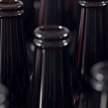Brewing Your Own Beer, 101
Announcing a series to help you get your homebrew project started

A new series, aimed at the novice or wannabe homebrewer
If you like beer, I get you. Me too!.
If you brew your own beer, fantastic! I love to brew and share my creations!
If you think about brewing but have not made the plunge yet. We are here to get you informed and started!
We are delighted to announce a new series on brewing your own beer! 101!!
For aspiring homebrewers, the information about brewing out there is not always helpful. Jargon and excessive technical detail mean that starting out can be daunting. What is a kit? Where do I get my hands on one, how much does an equipment kit cost and importantly, how do I decide on what approach to take? With this series of articles, I am stepping in to help you answer these questions and address practical issues (if that holds you back). Let’s get that brew-party started!
In this series, I will delve into the basic principles of beer making. Nothing too technical or complex. I will explain how brewing works. What fermentation is, what it does and list the approaches with which brewers kick off fermentation. I will then describe how we create our own wort. What the basic ingredients are and why these are important for making a tasty beer.
When you have finished reading this series, you know that there are only a few rules that homebrewers have to live by. You need not be an expert to succeed as an amateur brewer. Yeast does most of the hard work, not you. Patience, determination and investment is what it takes! Once established, your interest in brewing styles, processes, and practising will do the rest. Let’s go!
Here, we will focus on the basic steps that brewers use to make beer.
What does brewing entail?
Brewing entails two major steps. One is the preparation of a substrate (called ‘wort’). We make wort with malted grain (or their extracts) that provide the main source of fermentable sugars and the body of the beer (colour, major flavour and textures). We also use a range of additives (hops, fruits, and other additives) to give the beer flavour and nose. There is huge variation in recipes, and we can group their corresponding beers into distinct styles. We boil our wort to extract flavour, break down some complex sugars and rid our wort of bugs. We end up with a thick, sugary and flavoured substrate ready for the next step.
Fermentation
The second step is the fermentation of sugar into alcohol by yeast. Yeast are single-celled organisms that you can find everywhere. Yeast needs sugar to grow, so we can find it in abundance on ripe fruits, nectar or any other material that serves as a sugary snack. It will not surprise you that people have used spontaneous fermentation practices (because of natural infection and colonisation) to produce wine and beers for thousands of years.
Yeasts used for brewing fall in two broad categories.
1. Lager yeasts. Lager yeasts ferment at low temperature and produce a limited amount of flavour compounds. Brewers use these strains for lager production. The fermentation period spans months (up to six months).
2. Top-fermenting yeasts. Ale yeasts fall into this category. Top-fermenting yeasts grow and ferment sugar at higher temperatures. This means that ale production is fast (2-3 weeks). Ale yeasts also produce more metabolites that influence beer flavour. There is a huge variety of ale yeasts, some of which associate with specific beer styles.
After fermentation has stopped (it has turned all simple sugars into alcohol), we rack the beer into bottles or kegs. At this stage, the beer is flat and lacks carbon dioxide. To add carbon dioxide in bottled beer, we add priming sugar (dextrose) to the beer before bottling. Yeasts still in the beer will convert the sugar into more alcohol and carbon dioxide. We call this process conditioning. Alternatively, and when serving beer from kegs, we can force-carbonate our beer after transfer. We use CO2 cylinders for that.
I hope you have enjoyed this article and the overview of beer brewing. To support The Beer Collection and future posts, please leave a tip and sign up for our newsletter by visiting this page.
Cheers!
Edgar, homebrew coach at The Beer Collection.
About the Creator
Brewingbrowser
Science powers delicious beer making. To subscribe to our free newsletter, please join here: https://brewingbrowser.com







Comments
There are no comments for this story
Be the first to respond and start the conversation.